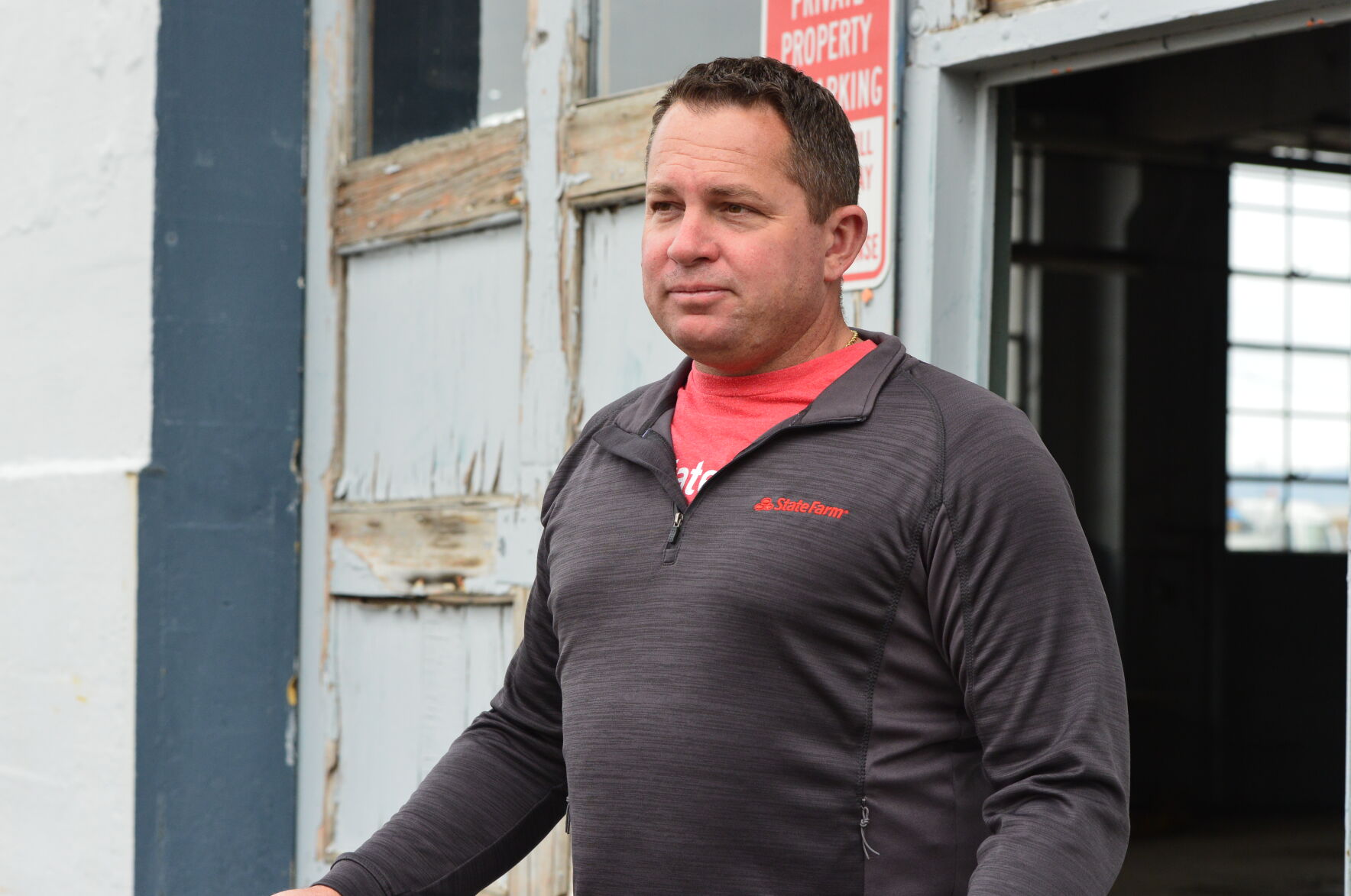On the trail: Little Alps: A history of skiing, and a genius mechanic
Published 3:00 am Saturday, March 11, 2023

- Jacoby
Little Alps isn’t.
Not completely, anyway.
The place isn’t large, to be sure.
But it’s decidedly not in the Alps.
This winter recreation site, in the Elkhorn Mountains about 3 miles down the mountain from Anthony Lakes Mountain Resort, is hardly alone in sharing a link, in name but not geography, with Europe’s famed range.
The Wallowas, which rise on the other side of Baker Valley, are occasionally saddled with the moniker “The Alps of Oregon.”
This seems to me unfortunate — and unnecessary.
The Wallowas are excellent mountains and don’t need to be artificially inflated, as it were, by such specious means.
And although the peak called the Matterhorn in the Wallowas is an imposing eminence, especially its west face seen from Hurricane Creek, it simply can’t compete with the original Matterhorn in the Swiss Alps.
Notwithstanding that both were sculpted by Ice Age glaciers, the Swiss Matterhorn (which also forms that country’s boundary with Italy) remains the archetypal mountain, almost a caricature with its nearly sheer stone faces and pinnacle and aloof dominance of the alpine valley above Zermatt.
The Matterhorn looks like the mountain a talented third grader with a flair for exaggeration might draw.
Little Alps at least acknowledges its comparatively diminutive status, topographically speaking.
The site was for several years in the 1950s the center for downhill skiing in Northeastern Oregon.
The cable that hauled skiers up the slope, a shoulder extending east from Van Patten Butte, was taken out more than half a century ago.
Gravity, however, continues, and the hill is now a popular sledding spot.
It’s also a convenient place to park if you’re planning to battle gravity, rather than taking advantage of it, and go snowshoeing.
Unlike the other roads that branch off the Anthony Lakes Highway, the short spur to Little Alps — it’s also the trailhead for Van Patten Lake — is plowed throughout the winter.
There’s enough parking space for at least a dozen vehicles.
Van Patten Lake is an ambitious goal. The route, which follows an old road most of the way, is about a mile and a half, but it climbs about 1,000 feet.
On Feb. 25, after watching young skiers race at Anthony Lakes, my wife, Lisa, and our son, Max, opted for the less strenuous terrain along Antone Creek. The stream, which heads in spring-fed meadows below Angell Pass, just below the Elkhorn Crest Trail, flows north and then east. It passes beneath the Anthony Lakes Highway, via a culvert, at the intersection of the Little Alps road.
It was a fine day to tramp around in the snow.
The sky was clear and the temperature just about right — a few degrees below freezing to ensure the snow stayed powdery rather than turning into sticky slush, but not so cold that even a light breeze slapped exposed skin.
We didn’t go far, perhaps a mile in all.
With the snow around 4 feet deep, most of the stumps and down logs were covered, so it was relatively easy to navigate.
We had no specific destination and so I picked a meandering route so as to avoid places where the streamside willows and alders created a gantlet for eyes and foreheads.
(Alas, my trailblazing skill is limited. Max, following my tracks with misguided confidence, took a whack on the forehead from a branch.)
Snowshoers with more stamina, and time, could follow Antone Creek to its headwaters, a trip that likely would take several hours, depending on the snow conditions.
Little Alps history
The story of the Little Alps ski area is basically the story of Champ Bond.
Bond, a longtime Haines resident who died on March 16, 2002, is one of the more intriguing characters in local history. He was truly a “mechanical genius,” to borrow the description Stan Ingram used in his wonderful book about the history of skiing in the area, “Anthony: A Tale of Two Skis.”
He grew up on a farm near Hot Lake and graduated from La Grande High School in 1929. He and his wife, Lois, were married in 1933 and they lived near Muddy Creek, west of Haines, for more than half a century.
Although Bond attended aircraft welding school in Portland for two years, I don’t know that there’s any formal training for building the myriad machines that he constructed during his career.
These included wood saws, grain choppers and hay stackers.
But the inventions that are integral to the story of Little Alps — and to skiing in general — are quite different.
Bond’s contribution actually started several miles away, on Antelope Peak, where the northern part of Baker Valley gives way to the Elkhorns.
There he constructed a cable tow, using among other things an engine from an old Hupmobile (an automobile sold from 1909 through 1939), to haul skiers up a short slope starting in the winter of 1949-50.
This was after skiing at Anthony Lakes, which began in the 1930s and was briefly restarted after World War II, ended again after the 1948-49 season.
After several years running the cable tow at a couple sites on Antelope Peak and near Little Antone Creek, Bond, frustrated by the unreliable snow at those lower elevations, moved his operation, under permit from the U.S. Forest Service, to Little Alps.
The 6,300-foot elevation there all but guaranteed good snow throughout the winter.
Ingram doesn’t delve into the origin of the name Little Alps, although apparently it wasn’t known as such in 1954, when Bond started his cable tow there. Ingram writes about the spot “now known as Little Alps” — now, in this case, being 1971, when Ingram published his book.
For the next decade, Bond operated a ski area there.
Over the years he expanded the business, extending the tow length from 1,200 feet to 1,800 feet, and adding a second, 600-foot tow that was powered by a Model A Ford couple.
Which demonstrates, in addition to Bond’s fabrication abilities, that he didn’t favor one make of antique vehicle over another.
In 1957 a lodge was built and Bond, once again showing his catholic tastes in the automotive raw material, hooked up a Chrysler engine to yet another cable, this one 1,200 feet long.
But perhaps Bond’s most famous creation — and one that ultimately made skiing possible not only at Little Alps but also at Anthony Lakes when the ski area reopened there in January 1963 — was his rotary snowplow.
He built it, Ingram writes, in 1957.
As the naturally gifted often are, Bond wasn’t satisfied with his first go at what is a formidable challenge. A rotary snowplow, which grabs the snow and flings it off the road, is considerably more complicated than a plow that relies on the brute force of a metal blade.
Bond’s original machine was powered by a pair of Ford V-8 engines (flatheads, I presume, given the era, although Ingram doesn’t specify the type). One powered the rig, the other spun the rotary blades that bit into the snow.
Although Bond closed Little Alps in 1965, in part because the nearby Anthony Lakes resort was siphoning much of his business with its better snow and longer, steeper and more varied ski runs, he continued to play a major role in the ski business.
The state highway commission had awarded Bond a contract three years earlier to keep the road open to Anthony Lakes. Ingram wrote that Bond replaced the Ford V8 powering the rotary blades with a Cadillac engine, and later made the same swap for the main engine, along with installing a new transmission that gave him 40 gears all told.
Bond also modified the Dodge Power Wagon that was fitted with a plow blade (the rotary was needed for especially deep snow, but keeping the road clear was a two-vehicle task). Lois drove the Dodge.
“Thanks to them,” Ingram wrote, “skiing has never been interrupted at Anthony because of snow-blocked roads since its opening in 1963.”
As for Little Alps, the lodge stayed on for several decades as a storage building. It was torn down several years ago.
Ingram writes that the hill where Bond installed the tow was “heavily wooded and required a good deal of clearing.”
The trees that Bond cut to create ski trails grew back, a thick crop of mainly lodgepole pines. But a few years ago the Forest Service, as part of the East Face project designed to reduce the fire danger along the east slopes of the Elkhorns, cut most of the pines.
I suspect the slopes today look much as they did in the 1950s when Bond brought his home-built, but apparently quite effective and reliable, ski tow.
I also suspect that sledders, after trudging up the hill half a dozen times, would much appreciate the sort of contraption that Bond was so adept at crafting.
And although his rotary plow probably would cause transportation officials to faint dead away, I’ll bet that rig would still throw snow farther than anything available now.





